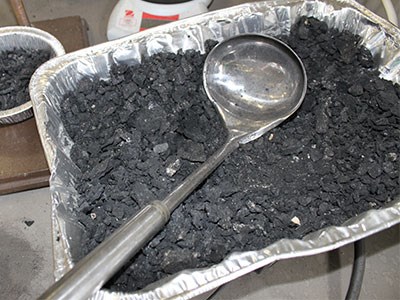Success for Ellsin Environmental has come in incremental steps — inches as opposed to leaps and bounds —but Bob MacBean recognizes that’s the way it goes when you’re innovating new technology.
MacBean, CEO of Environmental Waste International, Ellsin’s parent company, said its Sault Ste. Marie tire-recycling plant has made a number of advancements in the last eight months, with the company poised to sign a deal within the next 60 to 90 days.
Launched in 2011, the facility uses reverse polymerization technology to process used tires, breaking them down into their core elements of carbon black, oil, syngas and steel, which will then be sold to end users in the rubber, coatings or plastics industry.
Since last spring, Ellsin has reduced the capital cost of the plant by 40 per cent and made the facility more energy-efficient.
“That size of plant was originally built to do 900 tires,” MacBean said. “It actually does maybe 500 or 600 a day, but that size of plant, we’ve now figured out how to do 2,000 tires a day (with plant modifications), with roughly with the same energy level.”
Ellsin has also continued to court potential clients, and now has a list of interested parties hailing from China, Europe, South America, the Caribbean, the U.S., Canada, and Mexico.
“I’d say the technical risk is pretty well gone and I’d say the market risk is pretty well gone, from two aspects,” MacBean said.
“One, the number of opportunities to sell plants around the world has increased — we’ve got people from pretty well everywhere in the world — and, two, we’ve figured out how to make the end products — the carbon black, oil, steel — in a manner that’s acceptable to the marketplace, so those are all very positive things.”
But perhaps the most interesting development is the plant’s slight shift in focus, from processing regularly sized tires to the large, industrial, or “off-the-road” (OTR), variety of the kind used on mining, forestry and construction vehicles.
In mid-November, following extensive research and economic models, Ellsin decided the best use of the plant, should it be used as a commercial facility, would be to process OTR tires, as “no one’s really handling those effectively,” MacBean said.
“As opposed to shipping in tires from Toronto or Quebec or Chicago up to the Sault and then processing car tires, which we could do, the Sault’s located in a relatively great position because there’s a lot of forestry and mining activities up there in that area,” MacBean said. “Why not do that?”
Technical tests show the plant is capable of handling the OTR tires, and “the economics are compelling,” MacBean said. The plant would only require a minor upgrade to enable it to handle the oversized tires, and MacBean said one option would be to find a financial partner willing to invest roughly $5.2 million, for a 50 per cent stake in the company, which would raise the capital for the upgrades.
The company has done the engineering and developed a phased approach to the retrofit and, if Ellsin was to find an investor, MacBean estimates the plant could be up in production within six months.
While he has received an enthusiastic response to the idea, MacBean said it’s too early to tell whether any of those expressions of interest will turn into money. But he calls the concept “a real gold mine.”
“(The plant is) well located to get a supplier of those tires, it’s technically feasible, because we’ve done all the tests, it’s a very low amount of money in our scheme of things, and you could be in commercial production within six months,” he said.
“It’s a very compelling story and the return on investment is phenomenal.”




